Things I Learnt in 2023
See also:
- things I learnt in 2020 (and its HN discussion)
- things I learnt in 2021 (and its HN discussion)
I'm a bit of an infoholic. I get my fix from all over - Twitter, RSS feeds, Telegram channels, random blogs - if it's putting out knowledge, I'm taking it in. I skim through a metric ton of articles every week, but only the real mind-blowing ones make it into my "must-read" pile.
The best of these knowledge goldmines end up in my weekly (and occasionally free) newsletter, Tuesday Triage. Mixed in with some personal stories and ramblings about my latest read book or food craze, I highlight the most fascinating tidbits and compelling facts I absorbed over the past seven days.
In this article, I filtered out my top favorite nuggets of pure "whoa" from the past year of curating content. Here's a countdown of the most surprising, hilarious, and just plain weird things I learned, straight from the annals of Tuesday Triage:
1. Multiocular O ¶
Right, so this wild story is an example of why I love linguistics so much.
Multiocular O is a rare glyph variant of the Cyrillic letter O.
In the XV century some Russian monastery was asked to rewrite the Book of Psalms, but one of the writers decided that just copying it letter by letter is too boring.
He found the phrase "many-eyed seraphim" (серафими многоочитї), felt like it's missing something, and figured that it's missing eyes. So he added eyes to the phrase:

And this is the only known usage of this character in the human history.
Years later, Yefim Karsky, a famous linguist-Slavist, found this book, spent hours studying it, and documented the character as "multiocular O".
Even more years later, this glyph somehow ended up in Unicode: a collection of most important characters used to render texts on our phones and computers.
So now we can read the words серафими многоꙮчитїй precisely as it was imagined by some XV century clerk.
He'd have been very proud.
2. Falooda ¶
How about some pasta in your milkshake?
A falooda is a Mughlai cuisine version of a cold dessert made with noodles.

Might be quite good actually, I will give it a try.
3. Waverley Station’s name is not that unique ¶
There is a large sign at Waverley Station in Edinburgh claiming it to be the only station in the world named after a novel. Seems like this is not true:
Melbourne in Australia has an “Ivanhoe” railway station named after another of Scott’s novels. Berlin in Germany has a station named “Onkel Tom’s Hütte” (Uncle Tom's Cabin) a novel by author HB Stowe. "Westward Ho!" Station in England, now closed, was named from a Charles Kingsley novel.
And while we're at it, the Scott's monument is not the world's highest monument of a writer. The José Martí Memorial in Cuba is more almost twice higher.
4. Wine in French school canteens ¶
Seems like France was a cool place to study at less than a century ago:
In 1956, France also banned the serving of alcohol to children under the age of 14 in the school canteens. Prior to that, school children had the right to drink half a litre of wine, cider or beer with their meals. It was only in 1981 that France implemented a total alcohol ban in the country’s schools.
I wonder what happened though, and how kids managed to study constantly drunk.
5. The yellow first-down line ¶
I am not a rugby expert but seen a few games before and always thought that this yellow line is drawn on the field. It's actually not, and rendering it live is a big challenge:
It takes lots of computers, sensors, and smart technicians to make this little yellow line happen. Long before the game begins, technicians make a digital 3D model of the field, including all of the yard lines. While a football field may look flat to the naked eye, it’s actually subtly curved with a crown in the middle to help rainwater flow away. Each field has its own unique contours, so before the season begins, broadcasters need to get a 3D model of each stadium’s field.

Now you can walk into a rugby bar and become the star of the evening.
6. Second Skins ¶
My previous tattoo was done nearly a decade ago, and seems like technologies advanced in the meantime.
It’s what the name suggests! It’s a bandage that acts as another layer of skin to protect the wound that’s underneath it. This wound is a new tattoo. The idea was initially used to heal severe burns but later became famous for its use in protecting healing tattoos.
For those who never had a tattoo, the way it's done traditionally is your wound is wrapped in cling film, and then a few hours later you remove the wrapping, wash it and re-wraps with a piece of cloth, and then changes it once a day while covering the tattoo with some cream for a few weeks.
With the second skin, you don't do anything for almost a week, and then remove the clear film and only apply cream a few times a day.
7. Glasgow ice cream wars ¶
I am still not used to ice cream vans here in the UK, and especially the speed with which people show up to queue for a cone with a flake no matter the weather outside. Apparently they might be also queuing for something else:
The ice cream wars were turf wars in the East End of Glasgow, Scotland, in the 1980s between rival criminal organisations selling drugs and stolen goods from ice cream vans. Van operators were involved in frequent violence and intimidation tactics, the most notable example of which involved a driver and his family who were killed in an arson attack that resulted in a twenty-year court battle.
I was reading through Reddit comments on odd ice cream vans people encountered, and seems like a few decades ago it was like the Wild West: people used to sell everything there, from groceries and cigarettes to drugs and booze.
8. Spam musubi ¶
And as we look into food, this one I didn't expect:
Spam musubi is a snack and lunch food composed of a slice of grilled Spam sandwiched either in between or on top of a block of rice, wrapped together with nori in the tradition of Japanese onigiri.

I mean, how come it's so popular in Hawaii? It's on the seaside, surely there are better ingredients to make sushi with?
9. Champ ¶
I've just learnt about this Irish riff on mashed potatoes:
Champ (brúitín in Irish) is an Irish dish of mashed potatoes with scallions, butter, and milk.
The fun part is that the word was adopted into Irish slang, so "as thick as champ" means ill-tempered, or stupid.
10. Toby Jug ¶
One of the restaurants I follow on Instagram shared a story about a customer who enjoyed the dinner so much that decided to send back a hand-written letter and attached a Toby Jug as a token of gratitude. I had no idea about the latter so had to look it up:
A Toby Jug, also sometimes known as a Fillpot (or Philpot), is a pottery jug in the form of a seated person, or the head of a recognizable person. Typically the seated figure is a heavy-set, jovial man holding a mug of beer in one hand and a pipe of tobacco in the other and wearing 18th-century attire: a long coat and a tricorn hat.
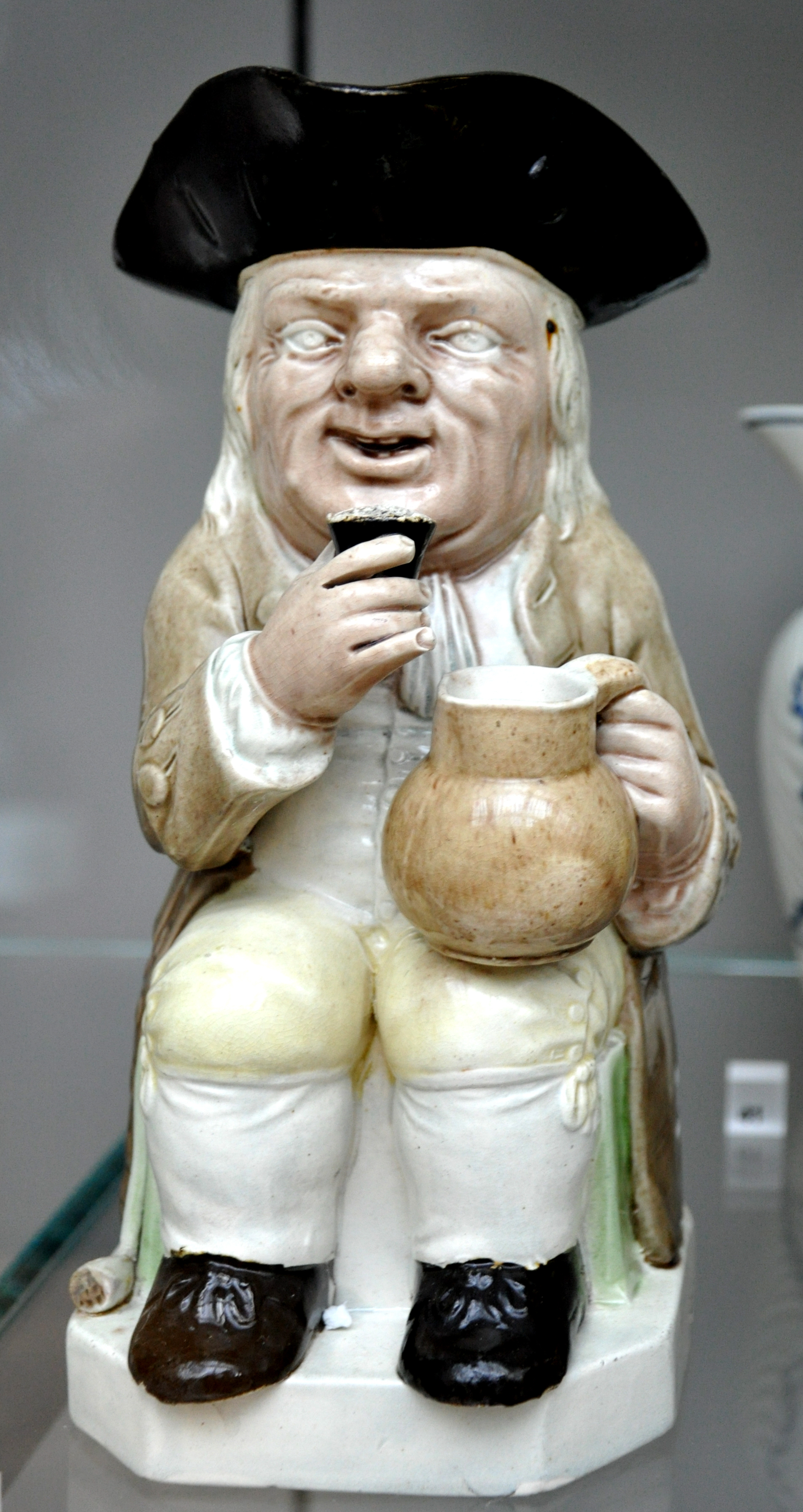
So these are just jugs, albeir almost no one drinks from them these days as it's too expensive.
11. Luxury train cars used to ride on paper wheels ¶
I definitely didn't expect that:
It may surprise you to learn, however, that some railways once used wheels made out of paper. The wheels were constructed by layering up hundreds of sheets of paper with glue, compacting them with a press, and allowing them to cure for a few weeks. The benefit of the wheels was that their composite paper construction helped damp vibrations and noise from the wheels and rails.
Given that, it makes sense those wheels for used mainly for sleeper and dining carriages as they provided a more luxurious ride.
12. End-of-history illusion ¶
If you ask someone how much do they think they'd do or learn next year, they will always think of their future selfs less than they should be, despite looking at that things they did during a year or any other time period before.
The end-of-history illusion is a psychological illusion in which individuals of all ages believe that they have experienced significant personal growth and changes in tastes up to the present moment, but will not substantially grow or mature in the future. Despite recognizing that their perceptions have evolved, individuals predict that their perceptions will remain roughly the same in the future.
So I guess for some people writing down annual summaries (or even more often, monthly or weekly ones) is a good idea indeed.
13. Conkers ¶
Kids two centuries ago were playing games using pretty much anything they could find, from snail shells to hazelnuts, but also chestnuts:
Conkers is a traditional children's game in Great Britain and Ireland played using the seeds of horse chestnut trees—the name 'conker' is also applied to the seed and to the tree itself. The game is played by two players, each with a conker threaded onto a piece of string: they take turns striking each other's conker until one breaks.
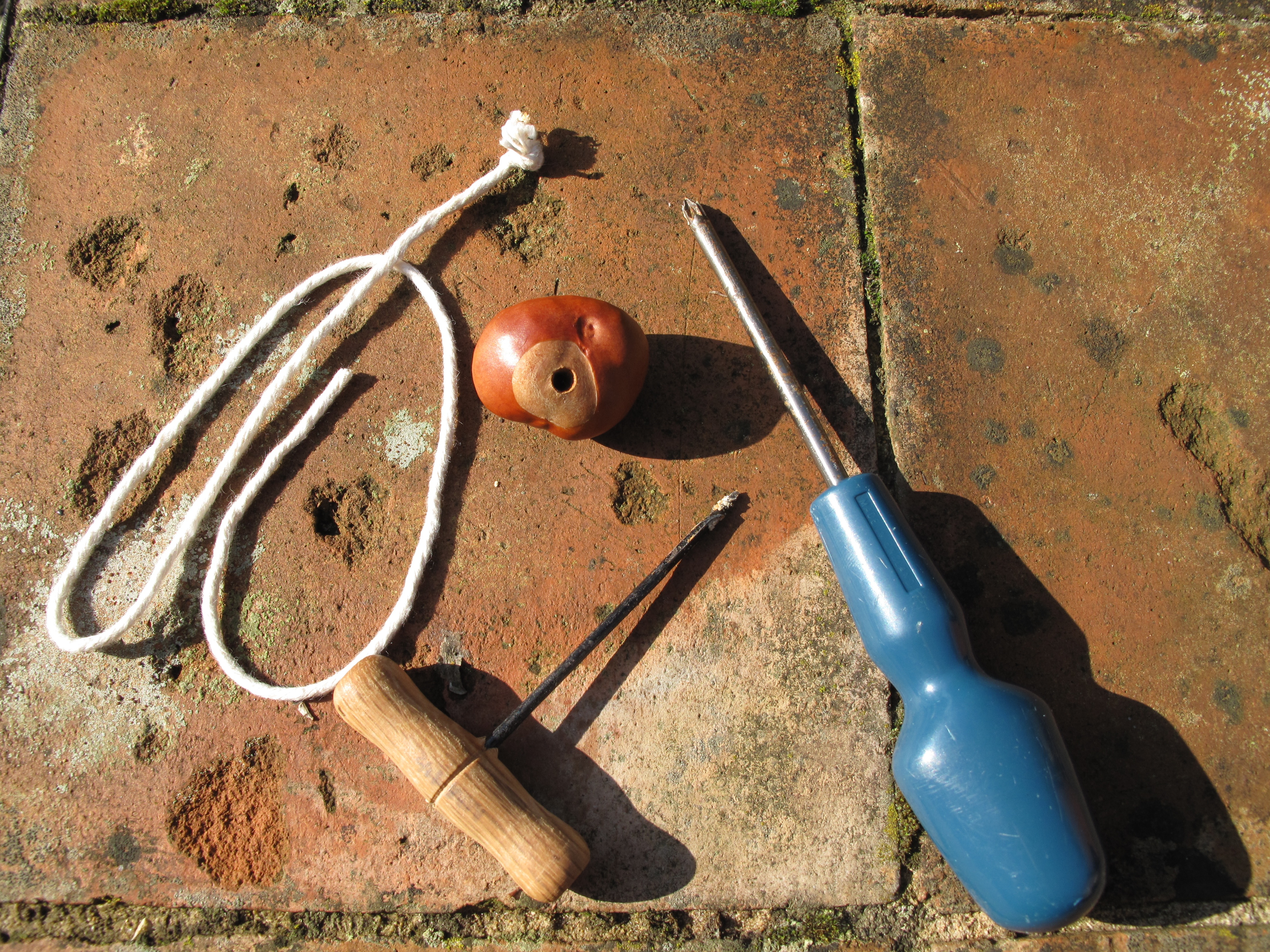
I wonder if there is a winning strategy: seems like most advice is about finding the hardest chestnuts and pray.
14. Why do studios use Roman numerals in the copyright notice in the end credits? ¶
If you watch post-credit scenes in movies, you might have seen the copyright notices using Roman numerals pretty much everywhere, from movies to TV shows.
The practice is believed to have started in an attempt to disguise the age of films or television programmes. In other words, the opposite of claiming an undeserved antiquity.
So seems like it comes from the time when it was important to make people think that the movie is as new as it gets, and people tend to be afraid of Roman numerals.
15. Tocharian languages ¶
There is an extinct branch of languages that wasn't discovered until last century and changed the way we think about Indo-European languages.
The languages are known from manuscripts dating from the 5th to the 8th century AD, which were found in oasis cities on the northern edge of the Tarim Basin (now part of Xinjiang in Northwest China) and the Lop Desert. The discovery of these languages in the early 20th century contradicted the formerly prevalent idea of an east–west division of the Indo-European language family as centum and satem languages, and prompted reinvigorated study of the Indo-European family.

Read the details if you want to understand how English mead is related to Chinease mì (honey), Dutch mede (honey), or Proto-Slavic medъ (honey).
16. Pub names ¶
I wrote about pub names before, but didn't think about illiteracy being one of the main reasons for their colourful names:
Many pubs are centuries old, and were named at a time when most of their customers were illiterate, but could recognise pub signs.

Probably was also handy for navigating around.
17. Rolled Up Holiday Pay ¶
I came across a job advertisement in the hospitality industry promising the rolled up holiday pay, and went down the rabbit hole:
“Rolled-up holiday pay” refers to a practice whereby the employer pays you an additional amount on top of your normal hourly rate of pay, with the additional amount intended to represent your holiday pay, instead of you taking the time off at the time you receive the payment.
The fun thing is, it's illegal to offer in the UK, and employers could get both a fine and also have to give the employee a real paid holiday as well, but seems like people are generally unaware about this possibility and just roll with it.
18. Kunga cake ¶
While fancy Michelin restaurants are carefully adding a few sugar-coated ants to a dessert, some folks catch their flies with oiled pans and make burgers:
Kunga cake or kungu is a food dish made of densely compressed midges or flies.
I will leave it up to you to look up videos.
19. When to serve dim sums? ¶
I was always confused by restaurants offering dim sums as a separate menu during lunch time but never for dinner, and I was even more confused when my friends took me to a dim sum place for breakfast in the States, but now it makes a bit more sense:
In China, dim sum is served as early as 5 a.m., whereas here in the States, it tends to be more of a brunch-type affair, although some restaurants offer dim sum through the dinner hours.
The article mentions that some server them at dinner hours but I am yet to find at least one place doing that in a non-ironic way.
20. Cows can run at speeds of up to 25 miles per hour ¶
While hiking in Dartmoor, we came across a farm full of cows which we needed to cross to get to the end of the trail. Cows didn't look friendly so while we were slowly backing up throw the mud and puddles I looked up whether cows are dangerous or not.
And they are indeed.
Don’t run – cows can run at speeds of up to 25 miles per hour, so getting yourself to safety before being trampled is unlikely unless you are very close to your escape route.
Not a new fact for me (but I thought it's a joke) is that the chance to die because of a cow is significantly higher than because of a shark. I see why now.
21. Should adults be consuming breast milk? ¶
Following the suit of important questions, here is another one: I was actually prompted to look it up following a disturbing advertisment of a coffee chain in Russia selling lattes with breast milk.
There is some evidence that drinking your own breast milk could fend off infections or mild illnesses and that when used topically, it can offer wound-healing properties. But peer-reviewed research on the fluid's effects on adults is lacking.
That said, a 2019 scientific review looked at some of the unexpected uses for breast milk in adults, such as its topical use for eczema and dermatitis. Turns out, the liquid may very well have the power to ease the two dermatological conditions, according to the researchers. The review also found that when human breast milk was applied topically to the eyes of infants with conjunctivitis (aka pink eye), breast milk was comparable in effectiveness to a common antimicrobial.
At least the research backs up the higher price, but there is also a chance all those effects disappear once the milk is heated (and latte means the milk is at least at 60ºC).
22. Welded bee ¶
A few times I've held steak knives with welded bees or forged flies between the handle and the blade.
Yes, there is a legend linking the bee on Laguiole knives to Napoleon Bonaparte. According to this legend, after the Battle of Mount Tabor in 1799, Napoleon granted the inhabitants of the Laguiole region the right to use the imperial bee as a symbol on their knives in recognition of their bravery in battle. However, this story has not been conclusively proven and remains a legend. Nonetheless, it adds an interesting dimension to the history and symbolism of the bee on Laguiole knives.

Now I know.
23. Tamagotchi Connection ¶
For some reason I was never allowed a Tamagotchi. My parents seemed convinced that kids loose their minds over those toys (or probably they were just saving money, who knows). This version, however, is a completely different level to the ones I've seen at school:
The Tamagotchi Connection is unique from prior models in that it uses infrared technology to connect and interact with other devices and was first released in 2004, 8 years after the first Tamagotchi toy. Using the device's infrared port, the virtual pet (referred to as a Tamagotchi) can make friends with other Tamagotchis, in addition to playing games, giving and receiving presents and having a baby.

That sounds like a way better multiplayer than that of many modern games.
24. 'Peter Pan' Gravemarkers ¶
I've seen a Peter Pan monument in Kensington Gardens numerous times, but never thought that, first, originally it was a story for adults (could have guessed that one), but also that there are some more grim objects from the story located nearby:
Just as the story relates, these tombstones are indeed boundary markers. Surveying stones that indicate the parishes of Westminster, (W.St. M. 13a.) and Paddington,(P.P. 1841). Barrie, who was a resident of the area, incorporated his knowledge of the landscape into weaving a fictional tale around the purpose of these demarcations, by attributing the carved initials as the names of two tragic souls. Thus giving us modern visitors a chilling thought as we wander around this luscious green space, keeping an ever-watchful eye on our wards and the time.
Seems like next time I will have to try and find them.
25. Killing sparrows led to Great Famines in China ¶
Sparrows were eating grain so some Chinese genious in 1950s decided to kill them to prevent the economic collapse and it didn't go as planned:
Sparrows worldwide are natural predators of many insects, including crop-damaging locusts. Locusts didn’t make Mao Zedong’s pest list since the sparrows consumed them along with the grain, controlling the insect population. Removing sparrows as the predator in its ecosystem would soon prove devastating for China.
Partly due to that, China lost over 15 million people during the Great Chinese Famine in the late 1950s.
26. Millennium Bridge workers hang straw bales after ancient bylaw triggered ¶
Most of ancient laws in the UK are myths or urban legends, but it's nice to see people respecting them when they're real:
The large bale, which these days is lowered on climbing rope by workers in hi-vis jackets, is intended to alert river traffic of the reduced headroom.
Urgent repair and cleaning work means the bridge was closed on Saturday for three weeks, until 5 November.
According to the Port of London Thames Byelaws, clause 36.2: “When the headroom of an arch or span of a bridge is reduced from its usual limits, but that arch or span is not closed to navigation, the person in control of the bridge must suspend from the centre of that arch or span by day a bundle of straw large enough to be conspicuous and by night a white light.”
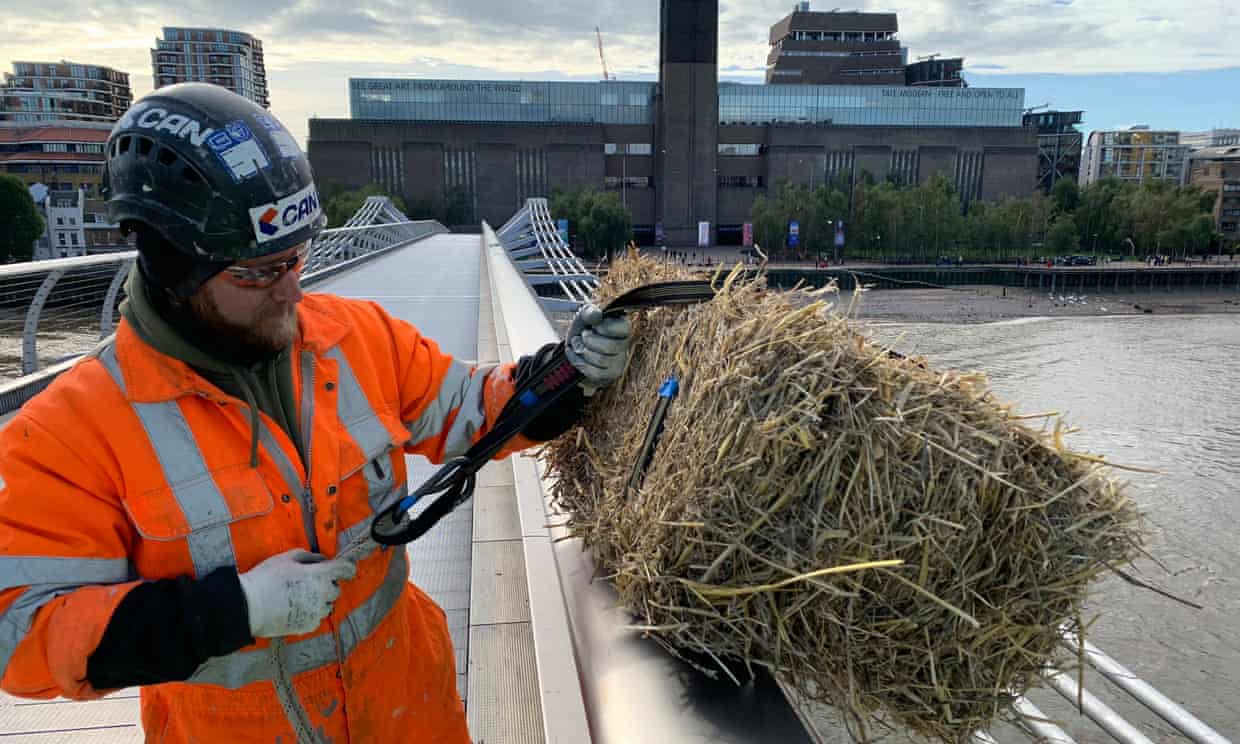
Imagine being sued for breaking a 900 years old law though.
27. Wisconsin Old Fashioned ¶
A fresh entry to my future 100 ways to ruin Old Fashioned book:
The Wisconsin Old Fashioned is the state’s variation on the classic Old Fashioned cocktail, with brandy and lemon lime soda.
At least that's soda, not Coke.
28. Costs of printing in braille ¶
I never thought about the difference in density of information printed in Latin alphabet vs braille, probably because I thought one could just print things smaller instead.
“We sell our books at the same price as a print book,” MacDonald said of the online store, “because we don’t think it’s fair for a blind person to pay more, even though braille costs three to four times more to produce.”
For reference, the braille edition of Harry Potter and the Deathly Hallows consists of 12 volumes (1100 pages) and weights 5.5 kgs.
29. How Deadly Is Quicksand? ¶
I was pretty sure quicksands are dangerous, thanks to all Indiana Jones I've seen, but they're actually not that bad:
Nope. Quicksand—that is, sand that behaves as a liquid because it is saturated with water—can be a mucky nuisance, but it’s basically impossible to die in the way that is depicted in movies. That’s because quicksand is denser than the human body. People and animals can get stuck in it, but they don’t get sucked down to the bottom—they float on the surface. Our legs are pretty dense, so they may sink, but the torso contains the lungs, and thus is buoyant enough to stay out of trouble.
Now I am curious why filmmakers keep portraying them as such: is it because they don't know too, or is it because the audience doesn't know and it's too late to teach everyone?
30. Whiskey fungus ¶
Places nearby distilleries apparently suffer from mold caused by airborne alcohol:
Baudoinia compniacensis is a sac fungus which has been observed on a variety of substrates in the vicinity of distilleries, spirits maturation facilities, bonded warehouses, and bakeries. The fungus is a habitat colonist with a preference for airborne alcohol, earning it the nickname whiskey fungus.

I am somewhat surprised there are no people complaining about it in Scotland.
31. Madrid is not a city ¶
I am still not used to the fact that Barcelona is not the capital of Spain, but now I have to also keep in mind that Madrid is not really a city.
King Alfonso VIII founded Madrid in 1202 and registered it as a villa on its municipal charter, and it has never been changed since.
Madrid has been the capital of Spain for 460 years, since King Felipe II named it as such after consulting 'wise men' to calculate the exact centre of mainland Spain to build his Imperial Court on (they were about 20 kilometres too far to the north, as it happens), but all attempts to change the charter – whenever anyone remembers, that is – have failed.
Seems like most sources translate its status as "town", but by Spanish terms it's actually a village instead.
32. Krajebieter ¶
A somewhat grim story about one of the more obscure occupations of the previous century:
They had a tradition of catching migrating crows for the pot. It was a job for the youngsters, and they used a humane and fast method of dispatching the snared birds - by crushing the rear part of the bird skulls with their teeth. They called these guys "Krajebieter" - crow biters.
I have no idea why not to treat it like a chicken and just break the neck instead. I do know though (just learnt) that most of these crows were sold to Kaliningrad (or Königsberg as it was called back then) where they were a delicacy.
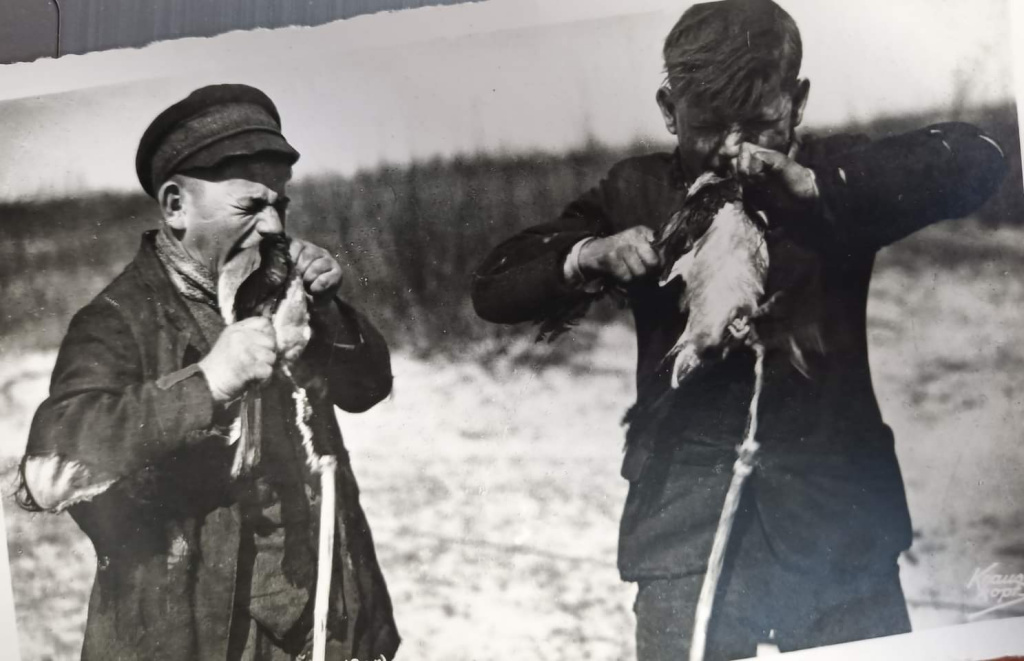
33. Tartanry ¶
After moving to Scotland, whenever I talk to people not from the country they seem obsessed with things I don't really encounter here: tartan, kilts, bagpipes. Apparently that false obsession even has a name:
In its simplest definition, tartanry is 'sentimental Scottishness'. More broadly, tartanry is the perceived reduction of Scottish culture to kitsch, twee, distorted imagery based on ethnic stereotypes – such as tartan, kilts, bagpipes, caber tossing, and haggis. Often the image presented is that of the Highlander as noble savage. While there are strong, legitimate cultural traditions behind Scottish clan societies and the older textile designs that preceded the modern tartans and kilts, and instruments like bagpipes are a part of the living musical traditions, tartanry is when these things are tokenised, caricatured, or attached to fabricated histories.
One exception to me is haggis though: everyone eats it here, I do eat it often, and every shop for locals stocks loads of it.
34. Q texture ¶
Now I know what to say to describe the right noodle texture:
In Taiwan, Q is a culinary term for the ideal texture of many foods, such as noodles, boba, fish balls and fishcakes. Sometimes translated as 'chewy', the texture has been described as 'The Asian version of al-dente ... soft but not mushy.' Another translation is 'springy and bouncy.'
Looks like it also could be used in a doubled form, "QQ", which means the same but more intense.
35. Harold Cohen ¶
I didn't know that AI was capable of producing drawings autonomously decades ago:
In 1971 Cohen took up a post as visiting scholar in the Artificial Intelligence Laboratory at Stanford University. While at the Artificial Intelligence Lab, he began developing the computer program called Aaron, in which he sought to codify the act of drawing.

Surely the example don't look as good as the ones done by Midjourney in 2023 but seems like we had it coming for a while.
36. Bere (grain) ¶
I learnt a lot here, but not sure what's my favourite: the correct pronounciation, the fact that it's the oldest cerial in the UK or the way to distinguish barley by the number of rows.
Bere, pronounced "bear," is a six-row barley currently cultivated mainly on 5-15 hectares of land in Orkney, Scotland. It is also grown in Shetland, Caithness and on a very small scale by a few crofters on some of the Western Isles, i.e. North Uist, Benbecula, South Uist, Islay and Barra. It is probably Britain's oldest cereal in continuous commercial cultivation.
I am yet to find a place where it's served though.
37. Stone of Scone ¶
So there is this stone used to crown British monarch for centuries (and before that, to crown Scottish kings as well), and at some point it was stolen from England by a few Scottish lads.
Ever since the reign of King Edward I, all succeeding British monarchs have been crowned sovereign over a slab of rock known as the Stone of Destiny. It goes by other titles such as the Coronation Stone in England and Stane o Scuin (Stone of Scone) in Scotland.
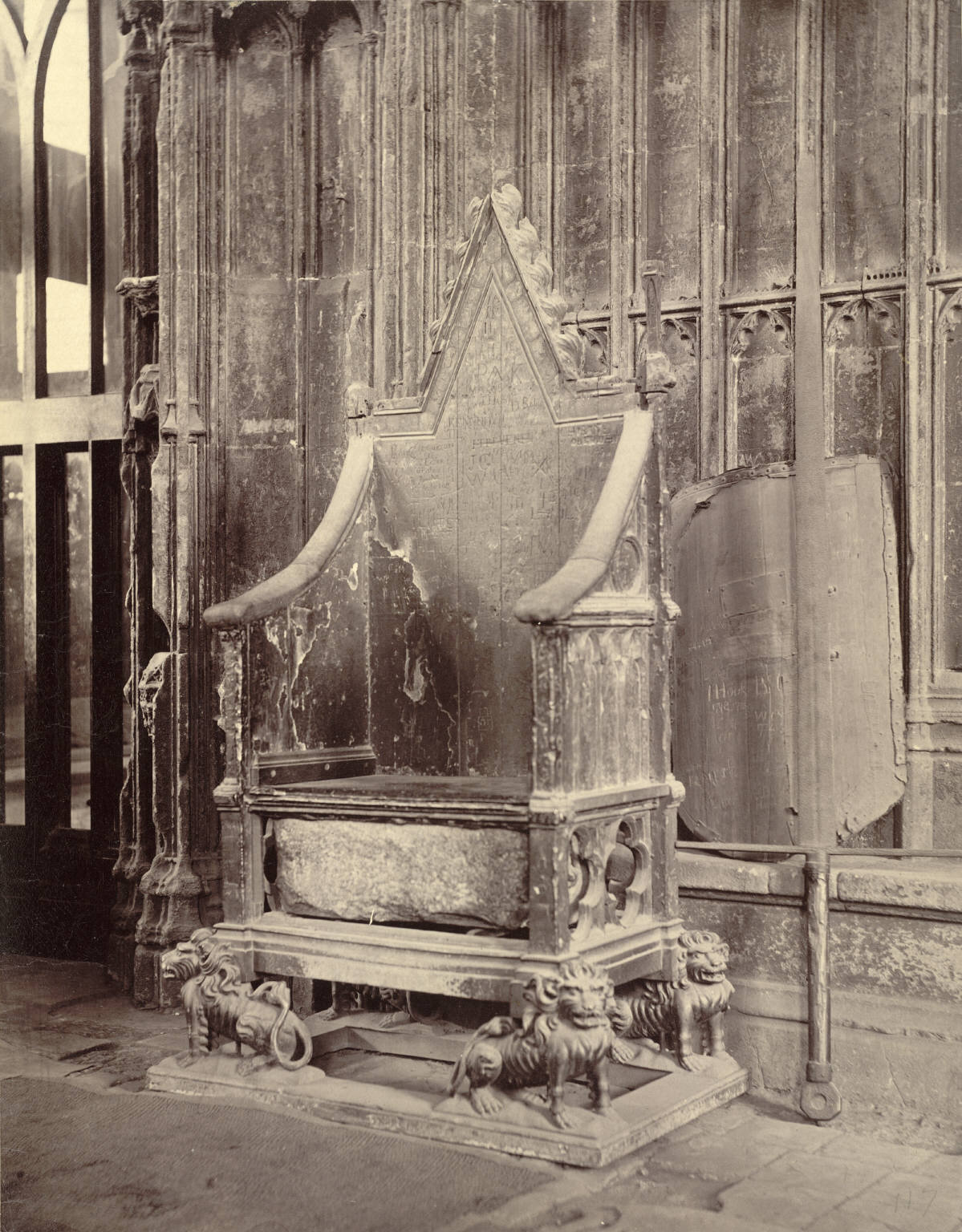
The rumour is, even though eventually the thieves were found and they gave the stone back, some people are sure that the original is still in Glasgow's pub called The Arlington Bar, where it is proudly displayed in a glass window.
38. Swimming in Seine ¶
I didn't know it was unlawful to swim in Seine, just thought it's kind of common sense:
Banned for a century because of the filthy water, city swimming is set to be one of the major legacies of the Games thanks to a €1.4bn (£1.2bn; $1.6bn) regeneration project universally hailed as a success.
Would be pretty cool to see the Olympics happening in the river next summer though.
39. Pitina ¶
Despite straightaway attempting dry-curing salami, I've also read a lot about different cured meats, and this one is something I've never heard of before:
It is not a true sausage, but a meatball made of smoked meats. The recipe was probably based on the impromptu need to preserve game. The preparation method did not require specialized equipment making it available to all homes, even the most isolated mountain huts.

I am not sure how people could reliably make these as the lack of protection and lots of exposed surface just sound dangerous, but I guess everyone else just has perfect conditions for meat aging. Maybe I will get there one day too.
40. Texans eat pickles at movie theatres ¶
I think I am mostly surprised that a single individually wrapped pickle costs a few dollars but seems like many people are confused by the very idea of snacking on a dill cucumber in a cinema.
And while you might be familiar with the usual suspects like boxes of candy, big cups of Coke, and a tub full of buttery popcorn, there's one unconventional concession stand snack that only Texans have been ordering for decades—pickles. Texans lovingly refer to them as "movie theater pickles" and are surprised to find out that no one else in the country really knows about this popular movie theater menu item. In fact, those who move away from the Lone Star State might not realize until they ask for one at their new local movie theater (and will be greeted with confused looks.)
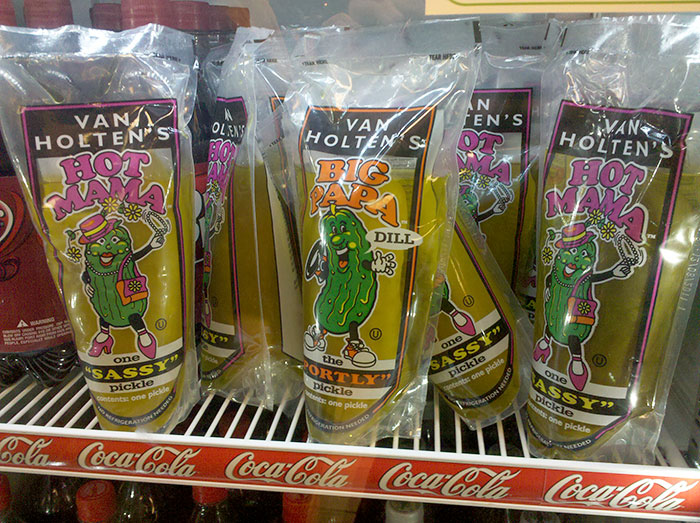
What's cool is that you can choose whether you'd like it drained or not when buying.
41. Carajillo ¶
While Canary Islands are famous for Barraquito, a sweet and boozy coffee-based drink with Liquor 43, the rest of the Spanish-speaking world drinks something similar but a bit less sweet:
A carajillo is a hot coffee drink to which a hard liquor is added. Similar to Irish coffee, it is typical of Spain and several Latin American countries, such as Colombia, where it is usually made with brandy; Cuba, where it is usually made with rum; and in Mexico where mezcal or a coffee liqueur such as Kahlúa or Tía María may be used.

I guess removing condensed milk from the Canary Islands' recipe makes total sense.
42. Irvine Welsh was once almost killed when in a double decker ¶
Not sure what surprised me more: the fact that Irvine Welsh is still very much alive (and I grew up reading his books), or the fact that he grew up in Leith, Edinburgh (which is now pretty much my neighbourhood).
Irvine Welsh has told how he was once almost killed when a double decker bus he was travelling on to watch his beloved Hibs crashed and he was hurled through the front windscreen onto the motorway.
The Trainspotting author said the fact he was drunk saved him as it made him “rubbery” as he “bounced along the road”.The incident, in which another football fan died, was a turning point for Welsh as he received £2000 in compensation. The money helped him buy his first flat in London, where he wrote diaries that would eventually become his classic first novel, Trainspotting, published in 1993.
Also I can't really believe that 30 years ago £2000 could help someone buy a flat in London.
43. Rashomon effect ¶
Do you know all these movies where the same events are shown again and again from different people's perspectives? Apparently it has a name:
The Rashomon effect is a storytelling and writing method in cinema in which an event is given contradictory interpretations or descriptions by the individuals involved, thereby providing different perspectives and points of view of the same incident.
Sometimes it's usage is very confusing though (and that's probably my only complaint about the latest season of the Witcher).
44. A system for transcribing bird sound as human speech ¶
We have transcription rules for languages and it makes it way easier to understand a pronounciation of pretty much any language without hearing it. Someone tried to come up with a similar system for bird sounds:
But these informal descriptions only occasionally appear in the scientific literature. For example, the “fee bee” of the black-capped chickadee might pop up in a paper to distinguish a sound from other chickadee calls, or to discuss variation in the “bee” syllable in a population. “This definitely doesn’t work for all birds, and its use is limited in terms of the scientific conclusions you can apply it to, but it can still be useful,” said Potvin.
Seems like in the end it didn't work out well, partly because the sounds birds make are not limited to their songs but also include tapping on trees and so on.
45. Why Don’t Americans Eat Mutton? ¶
Last time I learnt Americans spent decades without black currants, and now I learn they also don't have mutton:
By the end of World War II, mutton had come to symbolize everything that Americans wanted to leave behind. Men returned from the war swearing they’d never eat another bite of mutton after stomaching tinned army rations that included the notoriously unappetizing “Mutton Stew with Vegetables.” Women were enjoying new appliances that allowed them a modicum of freedom from household chores. Modernity and convenience were all the rage, and mutton, which requires dry aging and long, slow cooking times to become tender, was neither modern nor convenient. If mutton ever really had a heyday, by midcentury, it was over.
Probably that also explains why some people come to the UK and complain about food. Imagine eating something that looks familiar but tastes very wrong.
46. Aleatoric music ¶
There is a music style that leaves space for structured improvisation.
Aleatoric music (also aleatory music or chance music; from the Latin word alea, meaning "dice") is music in which some element of the composition is left to chance, and/or some primary element of a composed work's realization is left to the determination of its performer(s). The term is most often associated with procedures in which the chance element involves a relatively limited number of possibilities.

So as a performer you get to choose how to proceed at a certain point. Sounds pretty cool, albeit not that common anymore.
47. Kaffeost ¶
And here is something for my regular section of weird Nordic food:
Like Swedish lovers canoodling in a hot tub overlooking the frozen lakes of northern Scandinavia, kaffeost, or “coffee cheese,” bobs luxuriously in its hot coffee bath.
The dried cheese, called juustoleipä (sometimes leipäjuusto or just juusto), absorbs the steaming brew, softening without melting, like a rich, moist cheese sponge.

I am not sure if the words "moist cheese sponge" are meant to sound tasty or not, but I won't be the rushing to try it.
48. The Bilbao Effect ¶
I've been to Bilbao and had no idea about the museum before actually passing by it and deciding to pay a visit.
The Bilbao Effect is a term used by economists to describe the economic and social impact of the Guggenheim Museum. The museum was built in 1997 and is one of the world's most visited museums.

It's pretty cool to learn how much it has changed the city landscape.
And that wraps up this “greatest hits” collection of all things weird, witty, and wondrous from a year 2023 of Tuesday Triage issues! I hope you enjoyed this small taste. If you want to explore the full annals and archives, feel free to subscribe or peruse previous letters on TuesdayTriage.com.
Thank you for joining me on this endlessly fascinating journey of discovery this past year. I look forward to continuing to uncover marvelous morsels of knowledge to share in 2024!